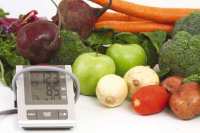
Kids or their parents might be making smarter choices when they visit fast food restaurants, even though burger joints are still the most popular drive-through stops, according to the results of a new a new study. Researchers from the Center of Public Health Nutrition at the University of Washington in Seattle report that American kids get about 14 percent of their daily caloric intake from fast food. Burgers top the list, followed by pizza, sandwiches and Mexican food, while chicken, Asian and seafood restaurants and coffee shops lag behind. The study was born from a desire to determine how different fast food restaurants contributed to children’s diets, based on the statistics that American adults consume 11.3 percent of their total daily calories from drive-through foods and beverages. In 2004, CBS News reported that one-third of American children ages 4 to 18 ate fast food daily, and according to the Palo Alto Medical Foundation, the only image more recognizable than Ronald McDonald to most kids is Santa Claus. Still, according to the University of Washington researchers, who used a unique algorithm that divided fast food restaurants into groups to access how much energy, sodium, fat and sugar kids were getting from those restaurants, American kids consume far more foods and beverages from grocery stores than they do from drive-through dinners. According to researchers, store-bought foods and beverages provided 64.8 percent of energy, 61.9 percent of sodium, 68.9 percent of added sugars and 60.1 percent of solid fats. Fast food restaurants, on the other hand, provided 14.1 percent of energy, 15.9 percent of sodium, 10.4 percent of added sugars and 17.9 percent of solid fats. While the research seems to go against popular opinion about the amount of fast food kids are actually eating, by measuring what foods kids do eat at those restaurants and the impact those foods have on sodium, sugar and fat consumption can help determine if recent industry moves toward providing healthier options are actually making a difference. These novel analyses, based on consumption data by fast food market segment, allow public health stakeholders to better monitor the effectiveness of industry efforts to promote healthier menu options, researchers concluded of their research, which appeared in the journal PLOS ONE. The study did not analyze the food and beverage choices that were part of grocery store purchases. It is estimated that 25 million people have diabetes while 80 million people have pre-diabetes.
This article originally appeared on Santa Rosa Press Gazette: Smarter choices made for dinner, reports said
